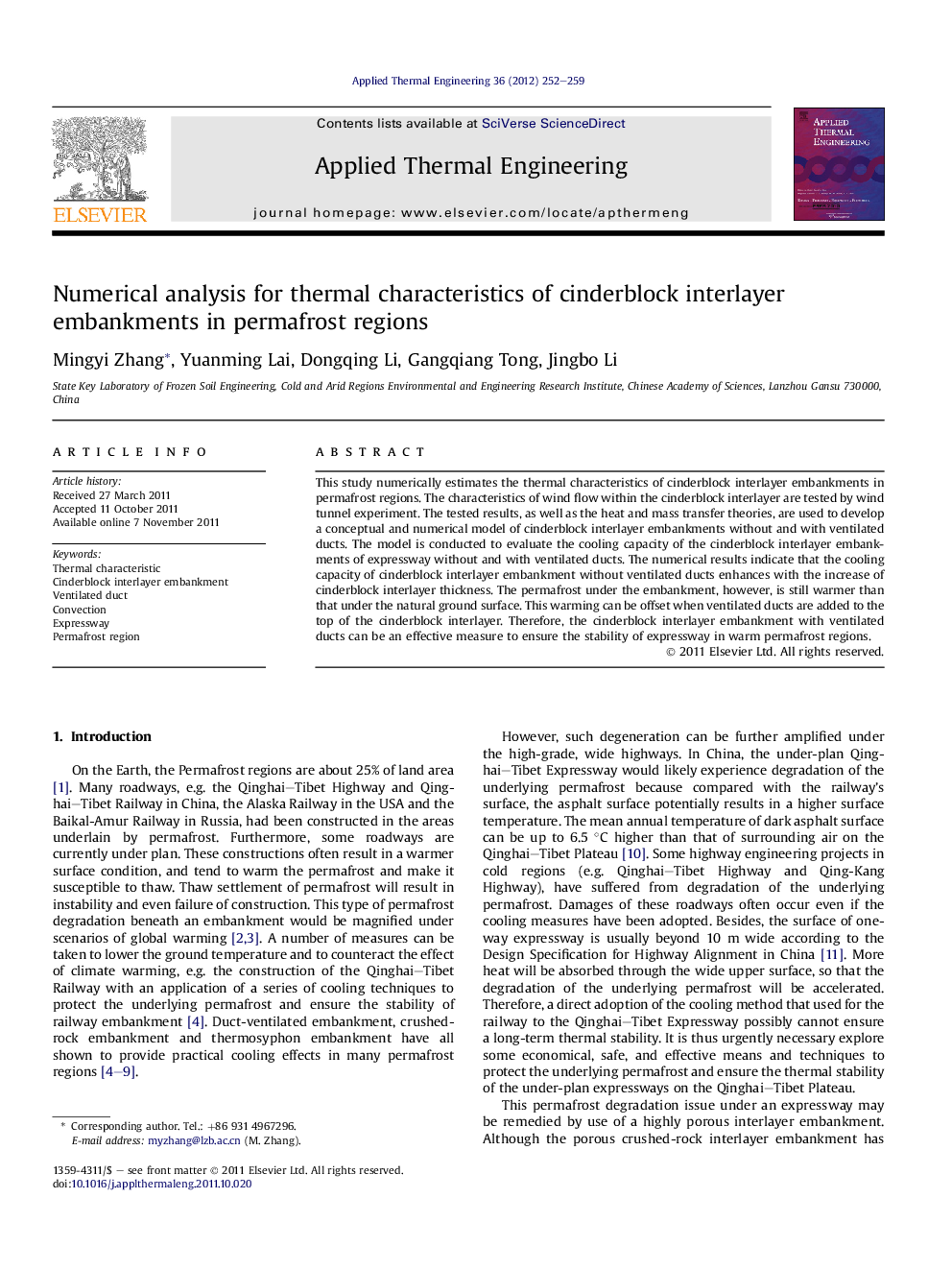| Article ID | Journal | Published Year | Pages | File Type |
|---|---|---|---|---|
| 647832 | Applied Thermal Engineering | 2012 | 8 Pages |
This study numerically estimates the thermal characteristics of cinderblock interlayer embankments in permafrost regions. The characteristics of wind flow within the cinderblock interlayer are tested by wind tunnel experiment. The tested results, as well as the heat and mass transfer theories, are used to develop a conceptual and numerical model of cinderblock interlayer embankments without and with ventilated ducts. The model is conducted to evaluate the cooling capacity of the cinderblock interlayer embankments of expressway without and with ventilated ducts. The numerical results indicate that the cooling capacity of cinderblock interlayer embankment without ventilated ducts enhances with the increase of cinderblock interlayer thickness. The permafrost under the embankment, however, is still warmer than that under the natural ground surface. This warming can be offset when ventilated ducts are added to the top of the cinderblock interlayer. Therefore, the cinderblock interlayer embankment with ventilated ducts can be an effective measure to ensure the stability of expressway in warm permafrost regions.
► A mathematical model is developed for cinderblock interlayer embankments. ► Thermal characteristics of the interlayer embankments are numerically studied. ► The interlayer is insufficient to protect permafrost embankments of expressways. ► Ventilated ducts can help the interlayer ensure the stability of the embankments.
